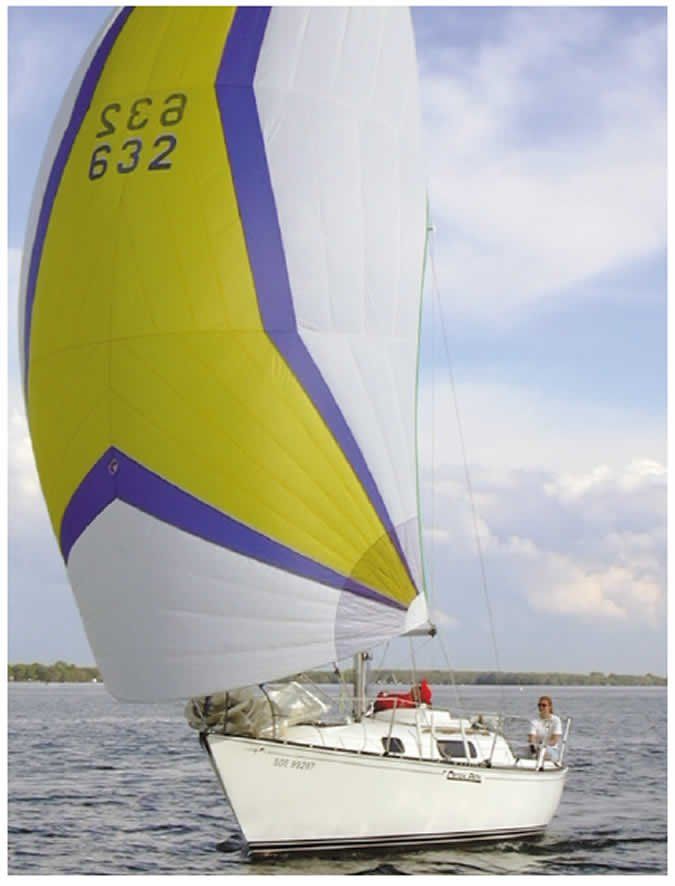
C&C Yachts produced four versions-and nearly 1,000 hulls-of its popular C&C 27 boat. Called the C&C 27 Mark I, Mark II, Mark III, and Mark IV, these boats differed in various ways, but the hulls were similar. A fifth design, the C&C 27 Mark V, was a totally different design. Heres a look at the various editions of the C&C 27, and how they differed from one another.
Mark I: Production ran from 1970 to 1972; hull numbers 1 through 167. Shorter hull and shortest rigs, with single upper and single lower shrouds. Mainsail traveller mounted aft in cockpit. Standard equipped with tiller steering and Atomic 4 gas engine.
Mark II: Production ran from 1972 to 1974; hull numbers 168 through 451. Same hull and sail area as the Mark I. High-aspect rig was two feet taller than Mark I. Rigged with one upper and two lower shrouds. Same aft traveller, Atomic 4 engine, and tiller steering as Mark I.
Mark III: Production ran from 1974 to 1981; hull numbers 452 through 914. Hull similar to previous editions but six inches in length were added to cockpit/stern area. Traveller was moved forward to bridgedeck mount, and wheel steering became an option in 1975; diesel power became option in 1978 (Yanmar). Draft and sail area increased; ballast decreased; displacement remained same as previous marks. Rudder redesigned with higher aspect shape. Small interior changes made but basic layout the same as marks I and II.
Mark IV: Production ran from 1981 to 1982; hull numbers 915 through 979. Most changes in Mark IV were cosmetic; teak interior replaced with off-white melamine, trimmed with teak and dark-anodized aluminum. Forestay moved aft about seven inched to make way for a bow roller. Auxiliary power option upgraded to two-cylindar Yanmar.
Mark V: Production ran from 1984 to 1986; hull numbers 1 to 169 (Niagara-On-The-Lake plant) and 500 to 610 (Rhode Island plant). The Mark V is a completely different boat than the other 27s; it is not considered part of the evolution of those previous designs. Geared more toward racing sailors, the Mark V was designed to meet the Midget Ocean Racing Club (MORC) rule.
* Compiled with data from the C&C 27 owners association, www.cc27association.com
































